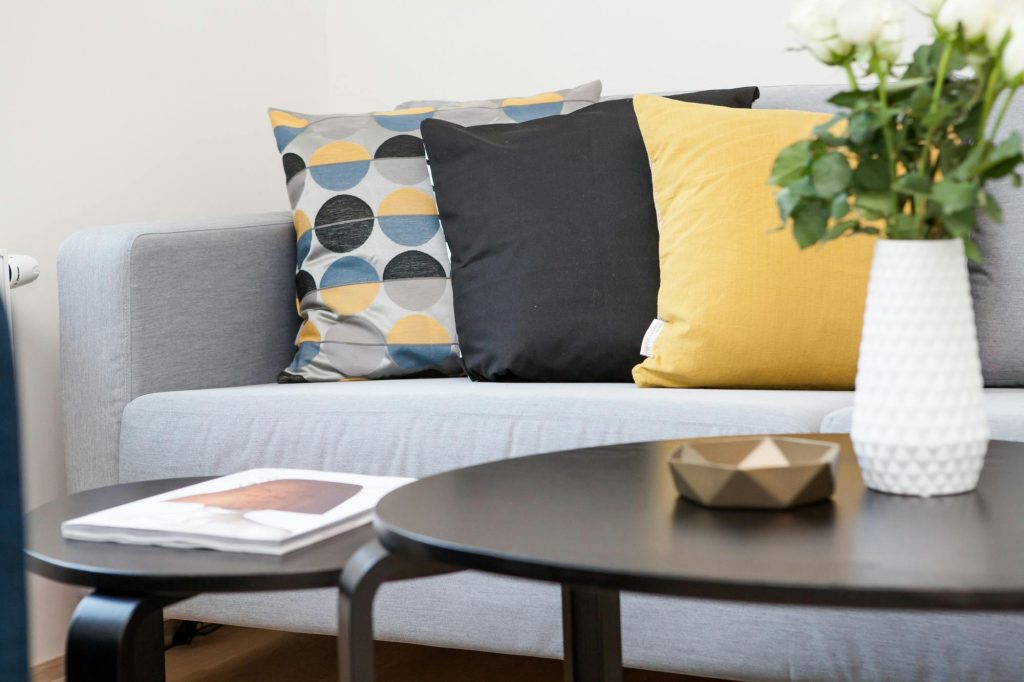As we approach 2025, the world of home decor continues to evolve rapidly, blending aesthetics with functionality, sustainability, and technology. Homeowners are no longer just interested in beautiful spaces; they seek designs that improve well-being, reflect personal values, and adapt to modern lifestyles. Understanding the latest trends can help you create a living environment that feels fresh, purposeful, and aligned with emerging tastes.
This article explores the most important home decor trends to watch in 2025, highlighting themes such as sustainability, biophilic design, multifunctional spaces, and smart technology integration. These trends reflect broader shifts in how we live and interact with our homes.

Sustainability Takes Center Stage
Sustainability has moved from a niche preference to a mainstream priority in home decor. In 2025, this trend will be even more pronounced, with a focus on eco-friendly materials, ethical sourcing, and reducing waste.
- Natural and Recycled Materials: Expect to see more furniture and decor made from bamboo, reclaimed wood, recycled metals, and organic fabrics. Brands are responding to consumer demand for transparency about the environmental impact of their products.
- Longevity Over Fast Fashion: Instead of buying trendy, disposable items, homeowners will invest in durable pieces that age gracefully. This shift encourages quality craftsmanship and timeless design.
- Upcycling and DIY: Creative repurposing of old items will continue to be popular. Upcycled furniture and handmade decor not only reduce waste but also add unique character to spaces.
Sustainability in home decor is supported by ongoing innovations in materials science and increasing consumer awareness. According to a McKinsey report, 67% of consumers consider sustainability when making purchasing decisions, a figure that is expected to grow.
Biophilic Design: Bringing Nature Indoors
The pandemic reinforced the human need for connection with nature, accelerating the adoption of biophilic design — an approach that incorporates natural elements into interior spaces.
- Indoor Plants Everywhere: From statement trees to small succulents, greenery improves air quality and creates calming environments.
- Natural Light Maximization: Large windows, skylights, and reflective surfaces are used to bring more sunlight into homes, improving mood and circadian rhythms.
- Organic Shapes and Earthy Colors: Furniture and decor featuring flowing lines and nature-inspired textures—like stone, wood, and clay—create a soothing aesthetic.
The American Society of Interior Designers notes that biophilic design is not just decorative but supports mental and physical health, reducing stress and boosting creativity. This makes it a hot trend for 2025 as wellness remains a key focus in living spaces.
Multifunctional and Flexible Spaces
With remote work and hybrid lifestyles becoming standard, homes must adapt to a variety of functions without sacrificing style. Multifunctional spaces are now a necessity, not just a luxury.
- Transformable Furniture: Modular sofas, fold-out desks, and extendable dining tables allow rooms to shift purposes quickly.
- Dedicated Zones: Open-plan living areas are being organized into distinct zones for work, leisure, and exercise, often using rugs, lighting, or shelving as subtle dividers.
- Smart Storage Solutions: Efficient storage, often built into furniture, helps keep spaces tidy and supports minimalist living.
This trend reflects the practical need for homes to serve as offices, gyms, schools, and relaxation areas. According to a 2023 report by Houzz, 54% of homeowners prioritized flexible spaces in recent renovations, a trend that will only intensify in 2025.
Technology Integration for Smart Living
Technology continues to reshape home decor by offering convenience, energy efficiency, and personalized experiences.
- Smart Lighting and Climate Control: Automated lighting systems and thermostats optimize comfort and reduce energy use.
- Voice-Activated Assistants: Devices like Amazon Alexa and Google Home are integrated into home designs, offering hands-free control of music, lighting, and appliances.
- Augmented Reality (AR) for Design: AR tools help homeowners visualize changes before committing, reducing uncertainty and improving design decisions.
The integration of tech in home decor is driven by the desire for intuitive, responsive environments. A recent Statista report projects the smart home market to exceed $158 billion by 2025, underscoring the growing demand.
Textures and Colors: Warmth and Comfort
As people spend more time at home, the atmosphere has shifted towards comfort and coziness.
- Tactile Textures: Velvet, boucle, and knitted fabrics are popular for upholstery and throw pillows, adding softness and warmth.
- Warm, Earthy Tones: Colors like terracotta, olive green, and mustard yellow replace cooler palettes to create inviting, grounded spaces.
- Mixing Patterns: Layered patterns, from florals to geometrics, add personality without overwhelming a room when balanced correctly.
These elements combine to craft spaces that are both stylish and nurturing, responding to the emotional needs of inhabitants.
Minimalism Evolves into “Maximalist Simplicity”
While minimalism remains influential, a new trend called “maximalist simplicity” is gaining traction.
- Statement Pieces: Bold furniture or artwork serve as focal points amid otherwise uncluttered spaces.
- Personal Expression: Homes reflect the owners’ personalities through curated collections of art, books, and meaningful decor.
- Balanced Contrast: The trend strikes a balance between simplicity and richness, avoiding starkness but maintaining clean lines.
This approach offers a fresh alternative to traditional minimalism, catering to those seeking individuality without chaos.
Cocnlusion
The home decor trends to watch in 2025 highlight a shift towards intentional living spaces that are sustainable, adaptable, and tech-savvy. Whether it’s through incorporating natural elements, optimizing multifunctional rooms, or embracing warm textures and colors, homeowners can create environments that support well-being and personal style.
Staying current with these trends allows you to make informed choices that enhance your home’s comfort and functionality while reflecting broader cultural and technological changes.
References
- McKinsey & Company. (2023). Sustainability in home design. Retrieved from https://www.mckinsey.com/business-functions/sustainability/our-insights/sustainability-in-home-design
- American Society of Interior Designers. (2023). Biophilic Design and Wellness. Retrieved from https://www.asid.org/resources/biophilic-design
- Houzz. (2023). Home Trends Report. Retrieved from https://www.houzz.com/magazine/home-trends-2023-stsetivw-vs~132775867
- Statista. (2023). Smart Home Market Size Worldwide. Retrieved from https://www.statista.com/statistics/471264/iot-smart-home-market-size-worldwide/









